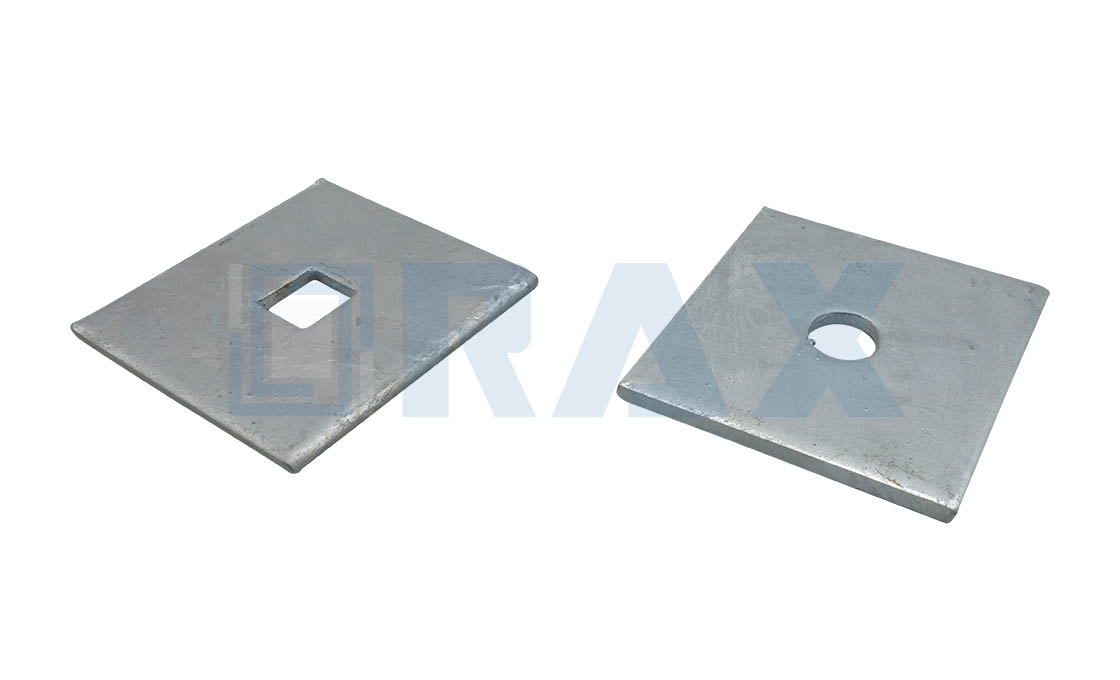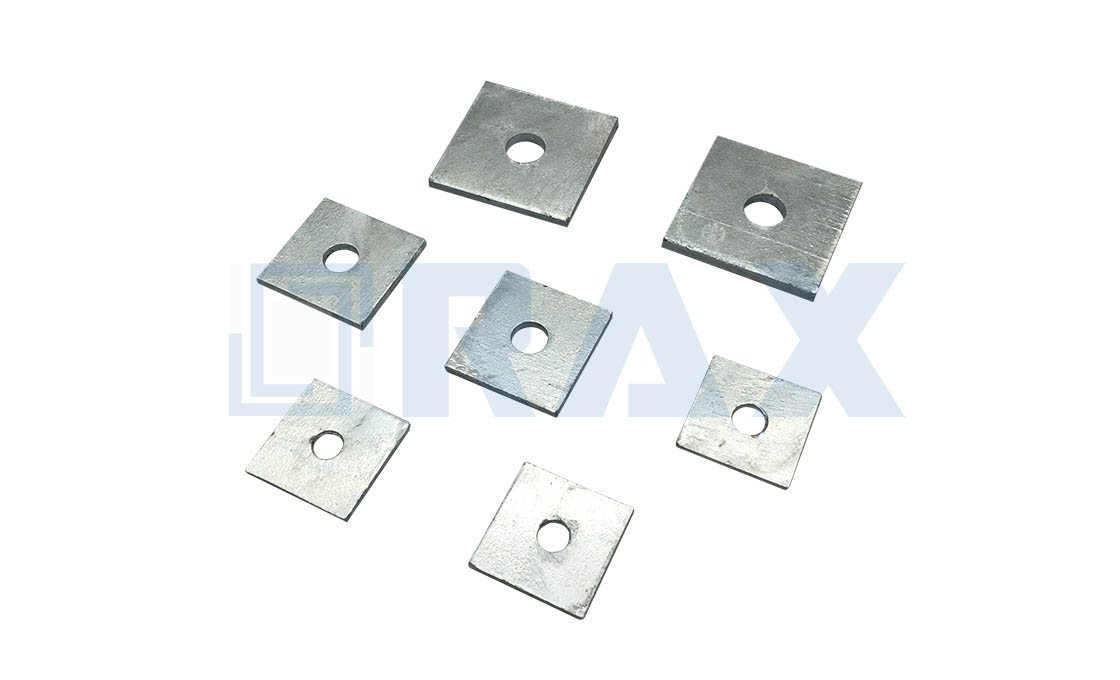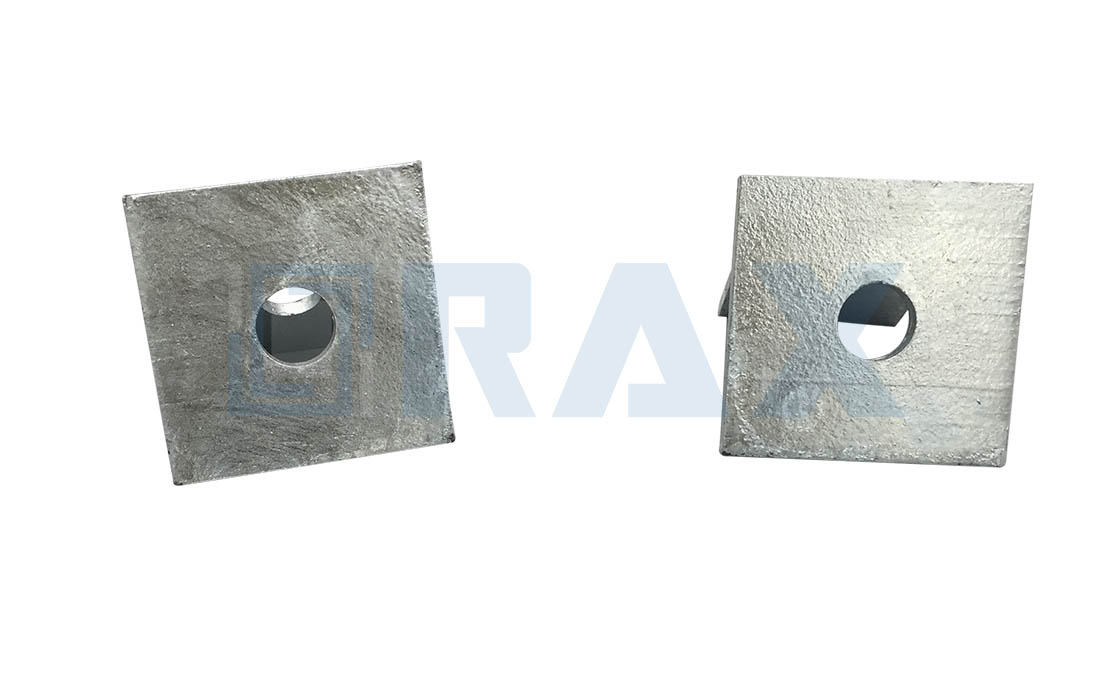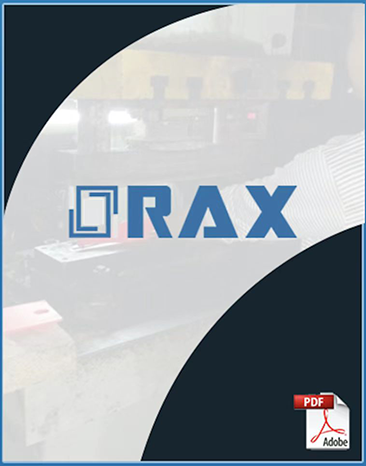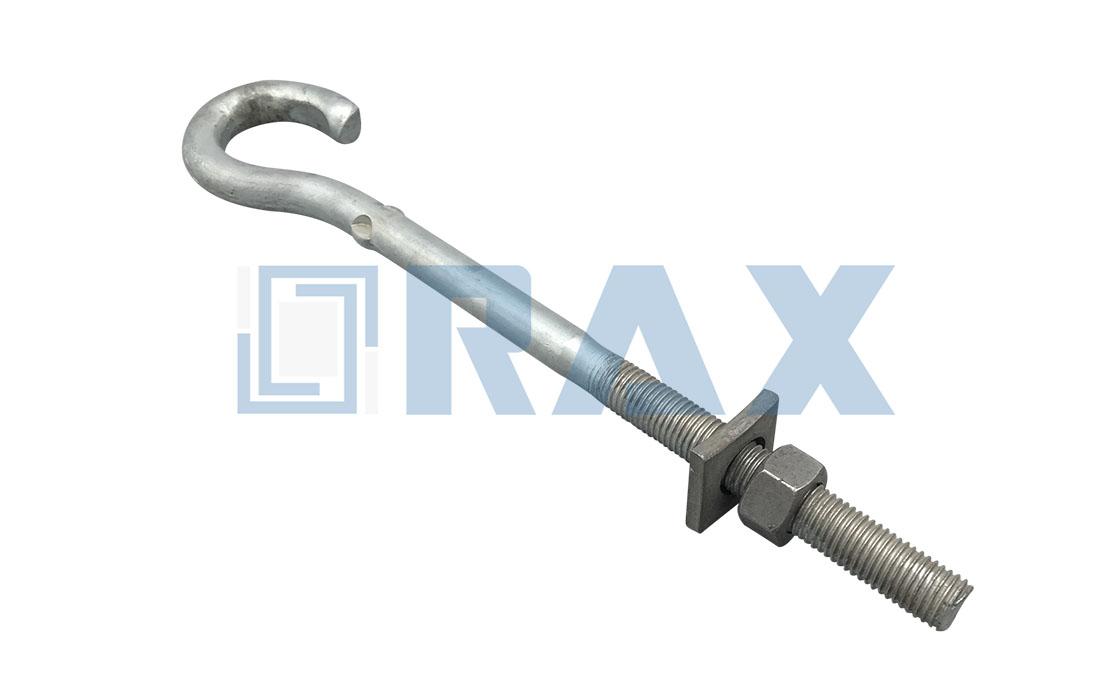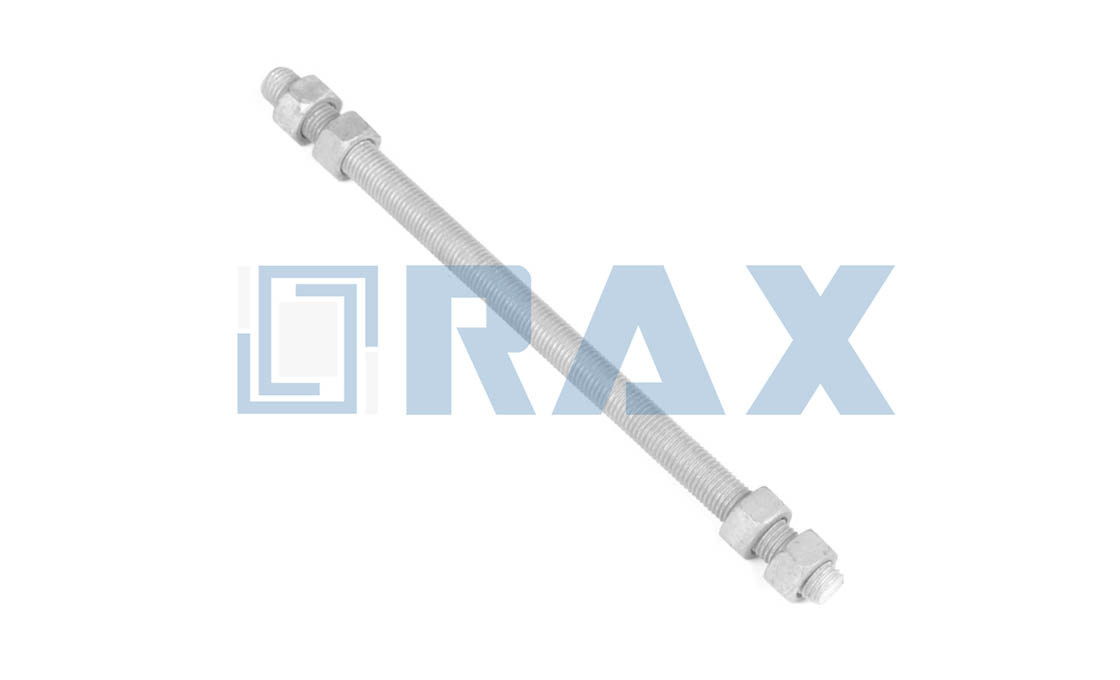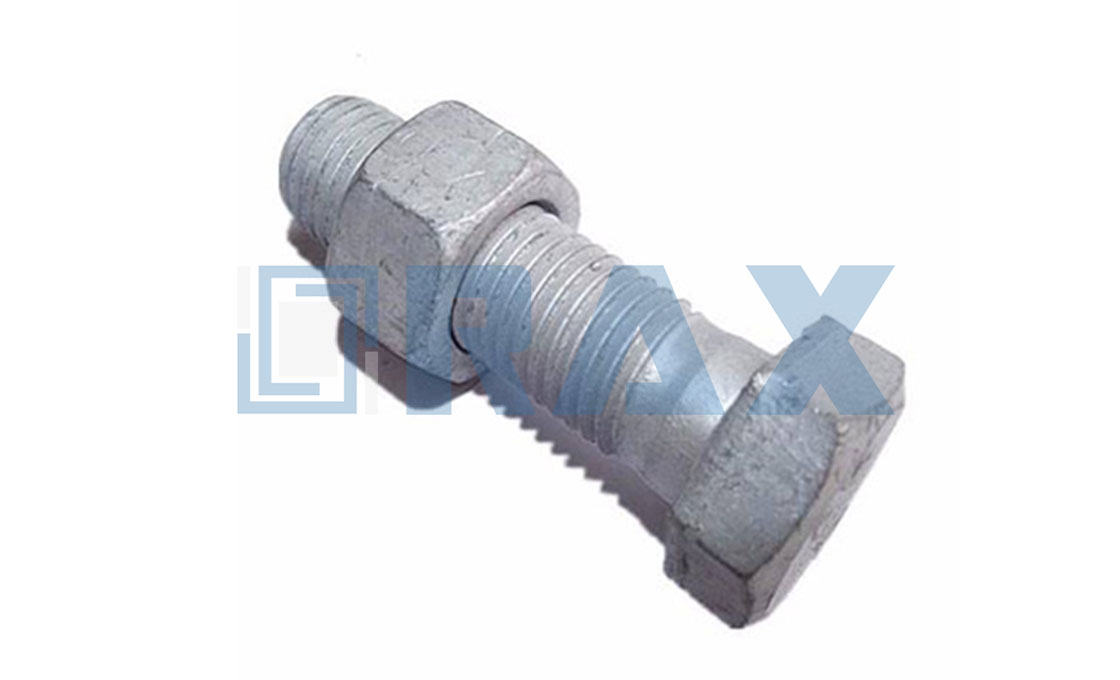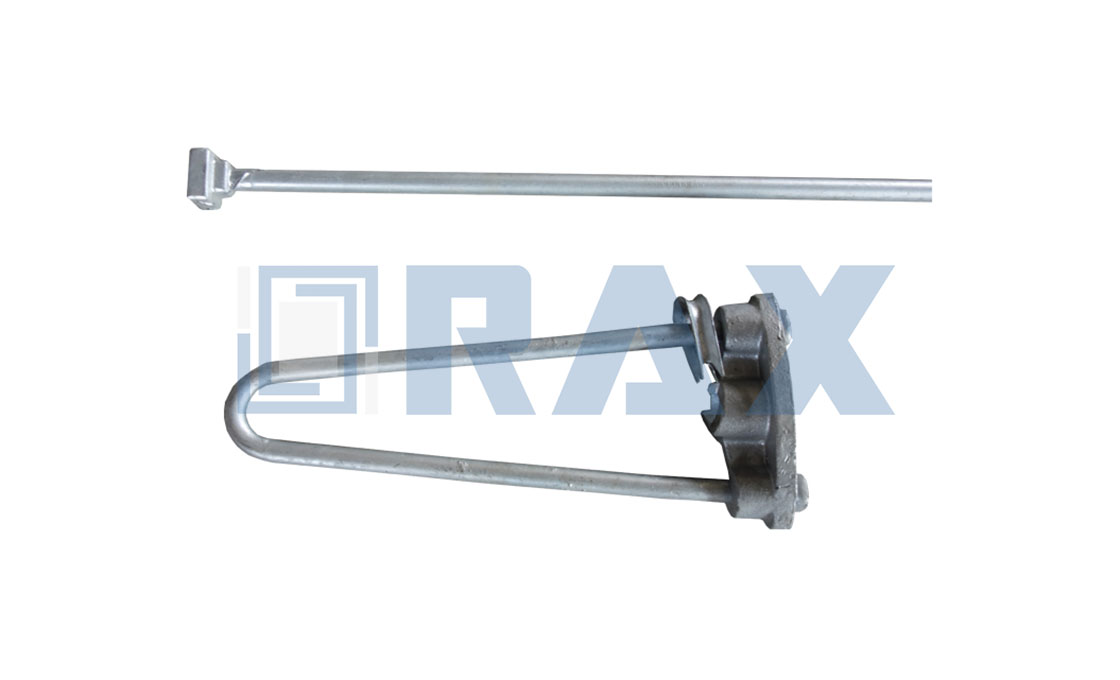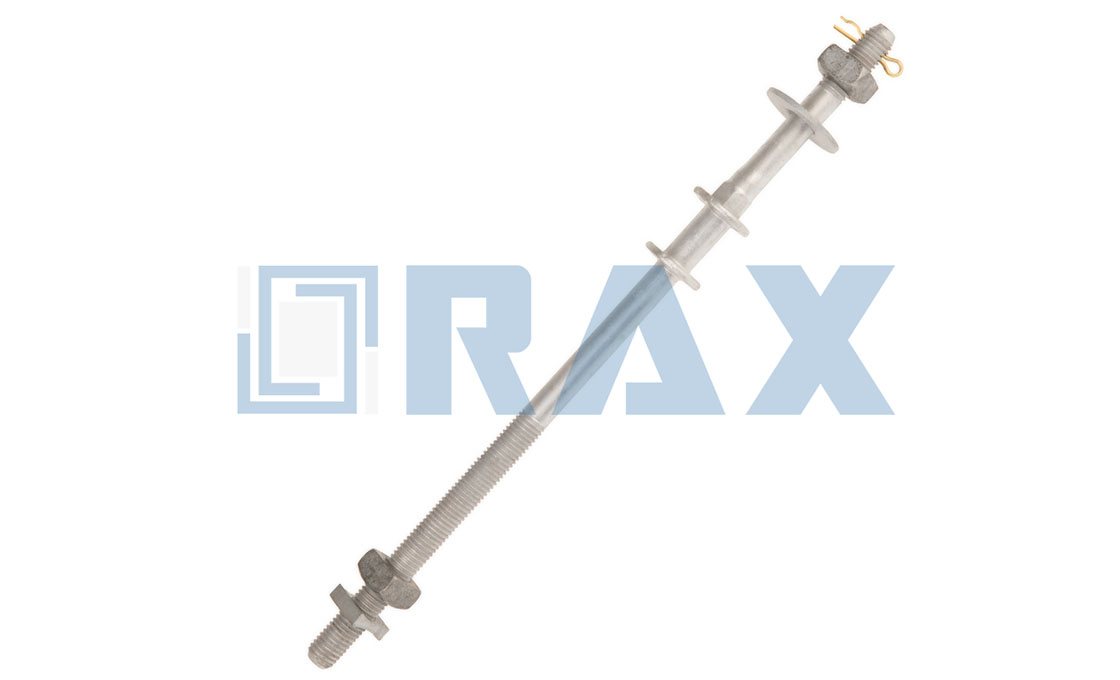Washers
The steel washers include square washers, curved washers, spring washers. The metal washer is used as accessories on the oval eye bolt, pigtail bolt, thimble eye bolt, hex bolt and nut, square bolt, and nut.
The flat square washer is also called a plate washer, it is used on a square concrete pole line to stop the eye bolt drop off. The curved washer is used on the wooden pole. The curve structure is fit for the wooden pole’s raised surface.
The plate washers have the standard sizes 50*50*3mm, 75*75*6.35mm, 60*60*4.75mm. They also can be manufactured according to the drawings or requirements of the clients.
There is a hole in the middle of the square washer and curved washer. The middle hole diameter depends on the eye bolt diameter. It is for the thread to pass through the hole.
The raw material for the square washer and the curve washer is flat steel. Flat steel cut into the right size. The spring washer is assembled with the bolt and nut. The spring washer makes the fastening more tightly.
All the square washers, curved washers, and spring washers are hot-dip galvanized, the galvanizing will protect them from getting rusty.
As a professional manufacturer, supplier, and exporter, Rax Industry can support all sizes of steel washers, We can also customize them according to your designs.
If you have any questions, please contact us.
| Product Specifications | ||
| Product Name | Square Washer | Square Washer |
| Product Type | Formed Steel | Formed Steel |
| Washer Type | Flat Square | Flat Square |
| Bolt Size | 5/8″ | 3/4’’ |
| Product Finish | Hot Dip Galvanized | Hot Dip Galvanized |
| Material | Carbon Steel | Carbon Steel |
| Size | 2 1/4″ x 2 1/4″ x 3/16″ | 3″x3″ x 1/4″ |
| Hole Diameter(s) | 11/16″ | 13/16″ |
| ANSI / NEMA Standard | Yes | Yes |
| Code | JY-SW-2 1/4″ | JY-SW-3″ |
| Standard Package | Woven bags | Woven bags |
| Unit of Measure | EA | EA |
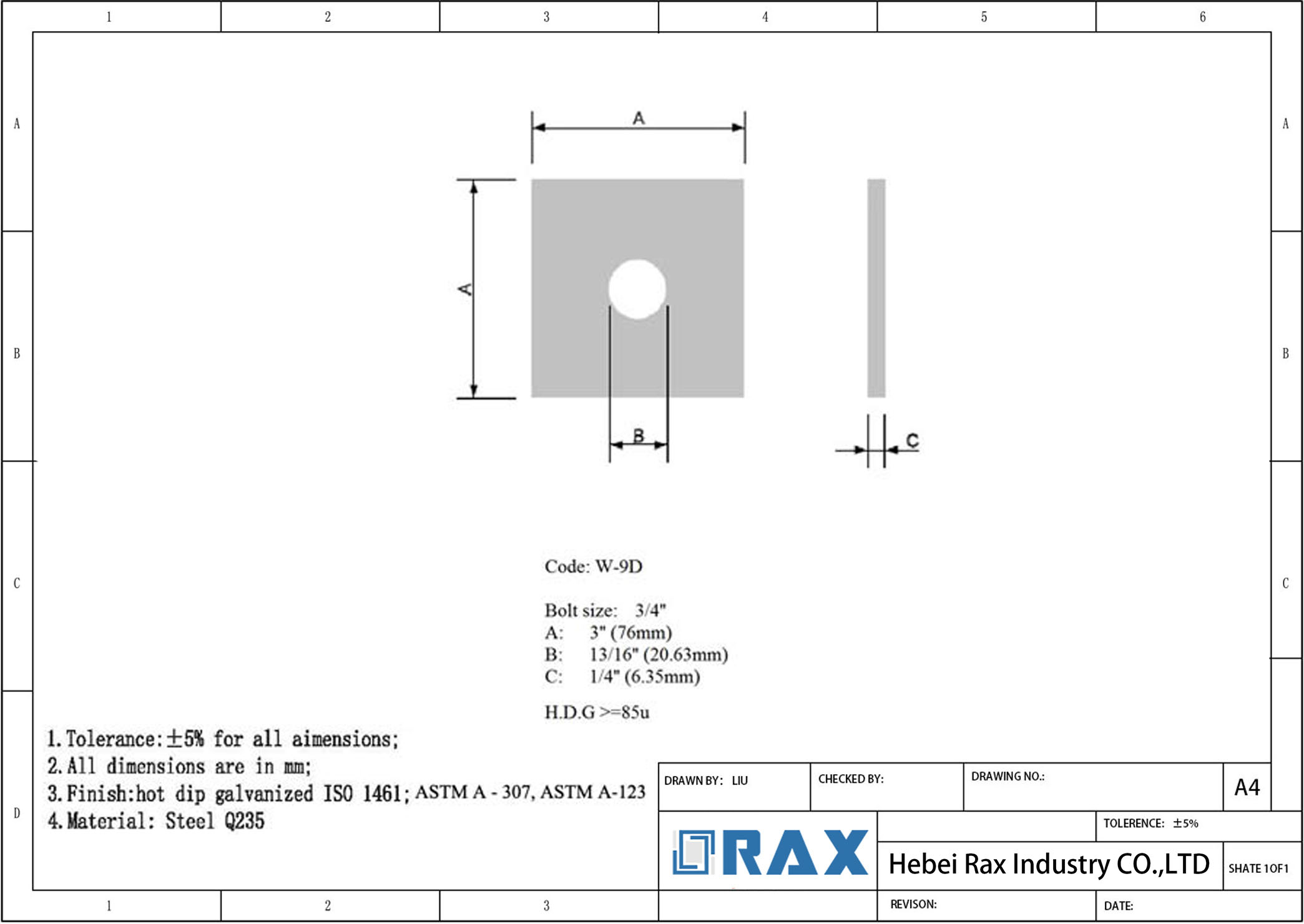
Washers: A Helpful Guide for Importers
- Chapter 1: What is a Square Washer?
- Chapter 2: Why You Need a Square Washer
- Chapter 3: Types of Washers
- Chapter 4: Technical Specification of Steel Washers
- Chapter 5: Steel Washers Manufacturing Process
- Chapter 6: Step-by-step Washer Installation Process
- Chapter 7: Frequently Asked Questions (FAQs)
- Chapter 8: Conclusion
The cost of doing maintenance on pole line technology is often very high, especially when you have to do replacements.
To avoid the high cost of frequent maintenance, engineers have come up with different devices to minimize wear and tear.
A washer is one of the recommended accessories.
It plays critical in assembling and fastening various pole line hardware.
For more details about washers, please read this guide to the end.
What is a Square Washer?
It is a thin plate having a hole at the center and mainly functions as a load distributor for fasteners.
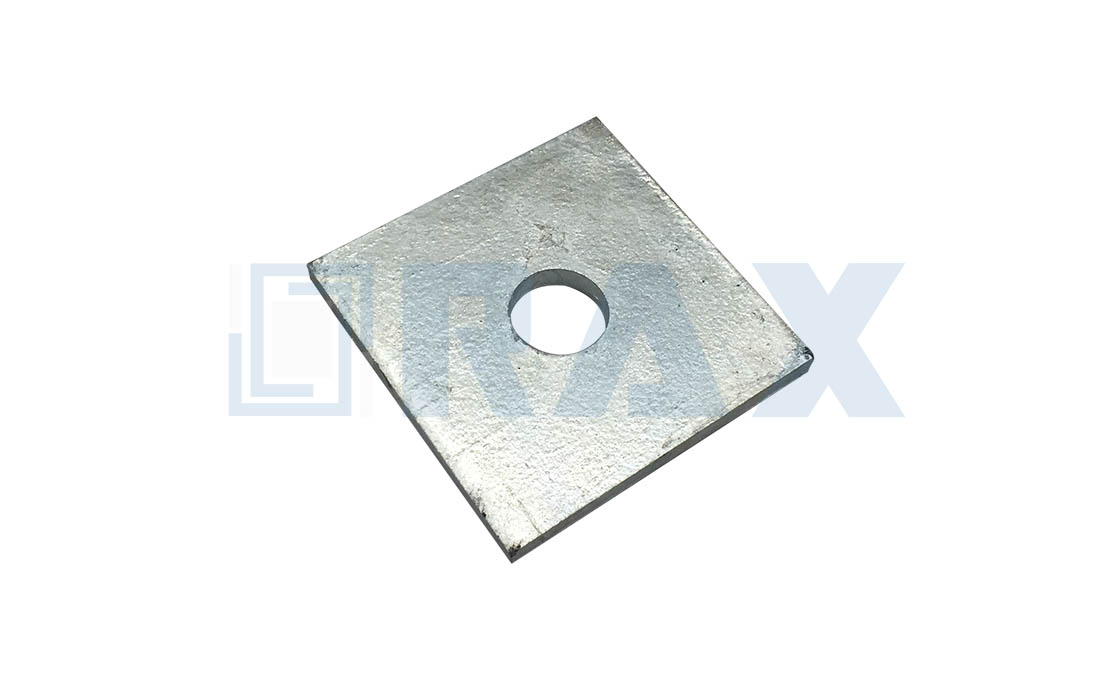 Washers
Washers
In many occasions, it is in use with bolts and nuts.
It can also work as a spacer, wear pad, spring, locking device and a preload indicator reducing vibration.
The outer diameter of a washer is often twice the size of the inner diameter even though it varies widely.
The material which manufacturers use in making washers include plastic or metal but high-tension joints require hardened steel.
Why You Need a Square Washer
Plate Washers come in different designs which means that they are for different uses.
They function well to prevent galvanic corrosion on steel screws by insulation from the aluminum surfaces.
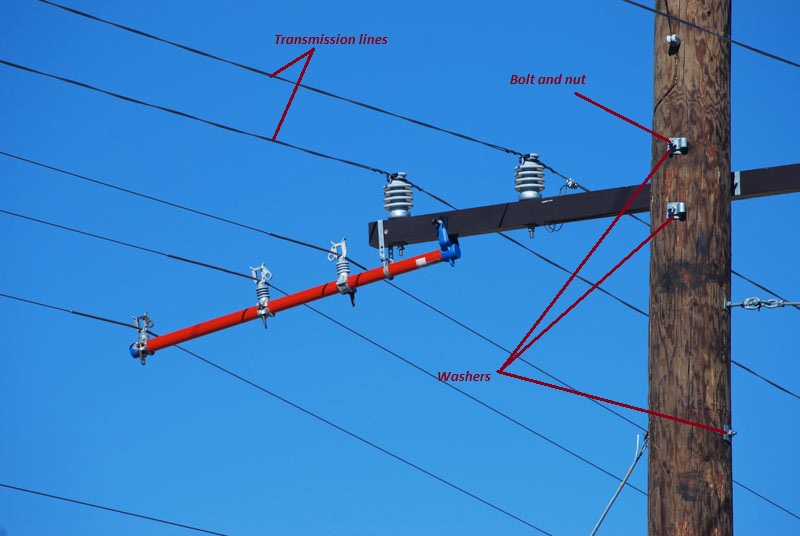
Washers on pole lines
It can also act as a bearing on rotating devices, e.g., thrust washers serve as rolling elements.
A washer is an essential part of fasteners especially when it comes to bolts and nuts.
It helps in the distribution of load on the bolts and nuts preventing them from damage.
Apart from that, washers also function well as a wear pad, a spacer, preload indicator, locking device, spring among others.
Types of Washers
There are three main categories of washers which include locking washers, plain washers, and spring washers.
· Spring Washer
They have axial flexibility, helping in the prevention of loosening or fastening which may result due to vibrations.
Belleville washer is one perfect example of a spring washer also known as a conical washer or cupped spring washer.
It has a conical shape providing an axial force in case it is under deformation.
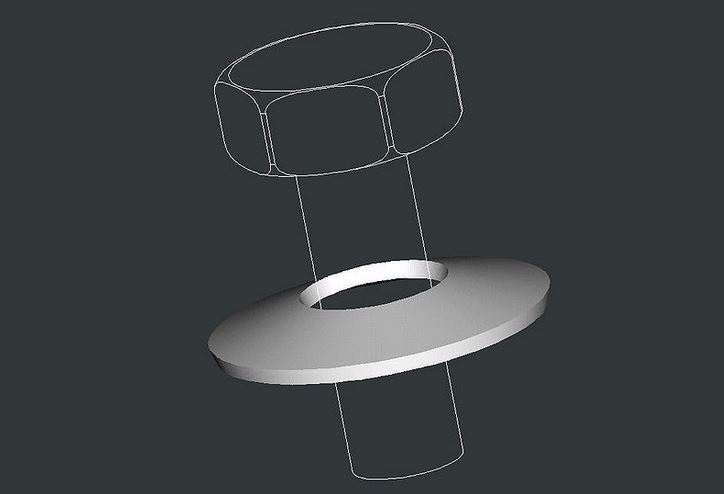
Belleville washer
The surface can be serrated thus improving the locking capabilities of the washer.
Curved Washers, also known as curved disk spring washer, is an example of a spring and locking washer.
It has similarities to the Belleville washer except for the fact that it curves only in one direction.
This means that it only has four points that are in contact with exerting very light pressure.
Wave washers are another example of a spring and locking washer with a wave pattern in the axial direction.
The wave pattern provides the washer with a particular spring pressure during compression.
They, however, produce little force in comparison to the Belleville washers of similar sizes.
Split washers known as spring lock washers are split at a particular point to form a helical shape.
The split makes the washer exert a spring-like force between the substrate and the fasteners’ head.
This mechanism presses the washer and the fastener hard against the substrate making it very tight.
· Plain Washers
They spread the load and prevent any form of damage on the surface that is being under construction.
It also provides insulation from shock on electrical appliances.
Flat or Plain washers are also known as flat rings or annulus and work by spreading the load on screwed fasteners.
It works well in a situation where the hole is of a larger diameter than that of a fixing nut.
Fender washer also known as the repair washer or penny washer has a large diameter on the outside.
The large diameter on the outside is in comparison to the central hole.
It spreads the load on the thin sheet of metal thus the name as it is common in automobile fenders.
It is in active use on connections that have been made larger by corrosion and wear.
The spherical washer is part of the self-aligning nut with a radiused surface working together with a mating nut.
It allows several degrees of misalignment between sections.
Wall washer or Anchor plate is a large washer or plate that connects to a tie bolt or a rod.
Torque washer work in conjunction with carriage bolts with a square hole at the center.
It has pongs and teeth to bite on the wood preventing the fastener or bolt from moving freely.
· Locking Washers
They prevent loosening and fastening by blocking the unscrewing rotation of the device used as a fastener.
Locking washers also perform the same function as the spring washers and may be confused as one.
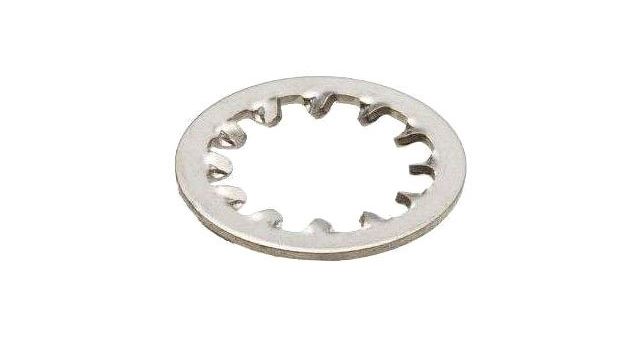
Lock washer
The tooth lock washer is also known as a star washer or serrated washer with serrations extending radially.
The splines extend outwards and inwards biting into a soft substrate and making a lock.
The lock makes the fastener stronger and resistant to rotation in case of vibrations.
Tab washers are a type of locking washer working by having a tab on the side that can bend in place on a nut.
The tab can, therefore, prevent rotation of the fasteners increasing its efficiency.
The wedge lock washer is a type of lock washer with two pieces having wedging and serration action.
Technical Specification of Square Washers
Anytime you’re buying washers, you should consider the following:
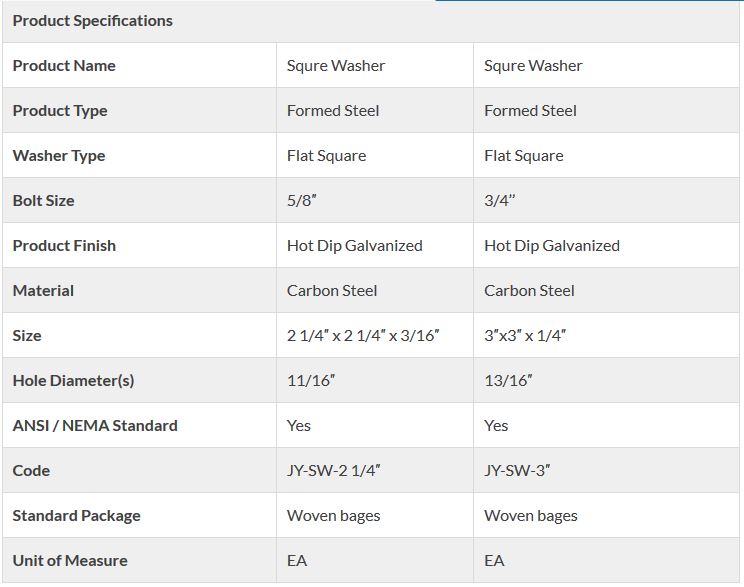
Square Washer technical specification
· Dimension
Plate Washers come in many aspects depending on the type of work they will do.
The inner and outer diameter is of the same size in most cases, but there are exceptions.
The thickness of the washers also varies depending on the type of washer.
Most of the washers are thin and have a modification to improve efficiency.
· Material Type
Metal and plastic materials are the most common material in the manufacture of washers.
Plastic washers are weaker as compared to metal washers and work in lighter jobs.
Apart from that, you will realize that the metal is also different in particular washers.
Steel, iron, and aluminum are examples of metals that are common in making washers.
Choose your washer wisely depending on the kind of job you will be doing.
More complex tasks require you to use washers with stronger materials.
· Finish – hot-dip galvanization
This is the process by which metal or steel washers pass through hot molten zinc to add it to an extra coating.
The additional layer will provide it with corrosion-resistant properties making it more durable.
It involves dipping the washers in molten zinc to produce a reaction forming the new coating.
· Thickness
Washers are usually very thin because they are not cover wide spaces.
The thinner the washer the more effective it is, and it is the reason why most washers are made thin.
· Washer standards
Washer standards cover different washers according to the kind of fasteners you intend to use.
It also specifies the kind of strengths you will have to look at before choosing the type of washer.
The most common standards for washers are as follows.
i. Plain washers for screws, nuts, and metric bolts for general plans.
ii. Plain washers for nuts, screws, and metric bolts for corrigendum and general plans.
iii. The tension indicating washers and tightening methods for fasteners.
iv. Standard specifications on steel washers, plain washers, unhardened for regular use.
v. Standard specifications for compressible washer- type direct tension indicators for use with structural fasteners, inch, and metric series.
vi. Plain Washers- Normal series – Product Grade A
vii. Plain Washers – Normal Series – Product Grade C
viii. Plain Washers – Large Series- Part 1: Product Grade A
ix. Plain washers- large Series- Part 2: Product grade C
x. Plain Washers – Extra Large Series- Product Grade C
xi. Tolerances for fasteners – Part 3: Washers for bolts, nuts, and screws – Product grades A, C, and F.
xii. Plain washers, chamfered – Normal Series- Product grade A
xiii. Washers, spring lock, carbon steel, procurement specification for (Stabilized: Feb 2015)
xiv. Washers, spring lock, corrosion-resistant steel 18 Cr- 9Ni (UNS S30200), procurement specification for.
xv. Conical Spring Washers (Stabilized: August 2016)
xvi. Spacers and Washers, Procurement Specification for, Metric (Reaffirmed: July 1991, May 1995, October 2001 and May 2006.
xvii. Screw and Washer assemblies made of steel with plain washers – Washer hardness classes 200 HV and 300 HV
xviii. Plain washers for tapping screw and washer assemblies- Normal and large series- Product grade A
xix. Plain washers for screw and washer assemblies – Small, Normal and large series – Product grade A
xx. Shaft nut and key washer installation, dimensions for (Reaffirmed: May 1995, October 2001 and October 2006)
In case you want to learn more on different standards of washers, here are some useful resources:
Steel Washers Manufacturing Process
The process of manufacturing steel washers is quite simple as it requires straightforward tools and machines.
The materials vary but, in this case, we will be using steel to make our washers.
Gather all the materials that you will require including steel and cutting machines.
Measure and cut the steel according to the size and shape that you will require for the washer.
Polish the surface of the steel to make it smooth before punching a hole in the center of the steel.
Remember that the diameter of the hole also known as the inner diameter is the same as the outer diameter.
The inner diameter and the outer diameter are not always the same depending on the type of washer.
There are other designs of washers that require special machines to make such as serrated or star washers.
After making the holes in the washers, you will pass them through the special tools depending on the design.
Hot-dip galvanization is the final process in manufacturing steel washers.
It involves passing the washers through hot molten zinc to add an extra coat making it corrosion-resistant.
It also provides it with a smooth finish making it more durable.
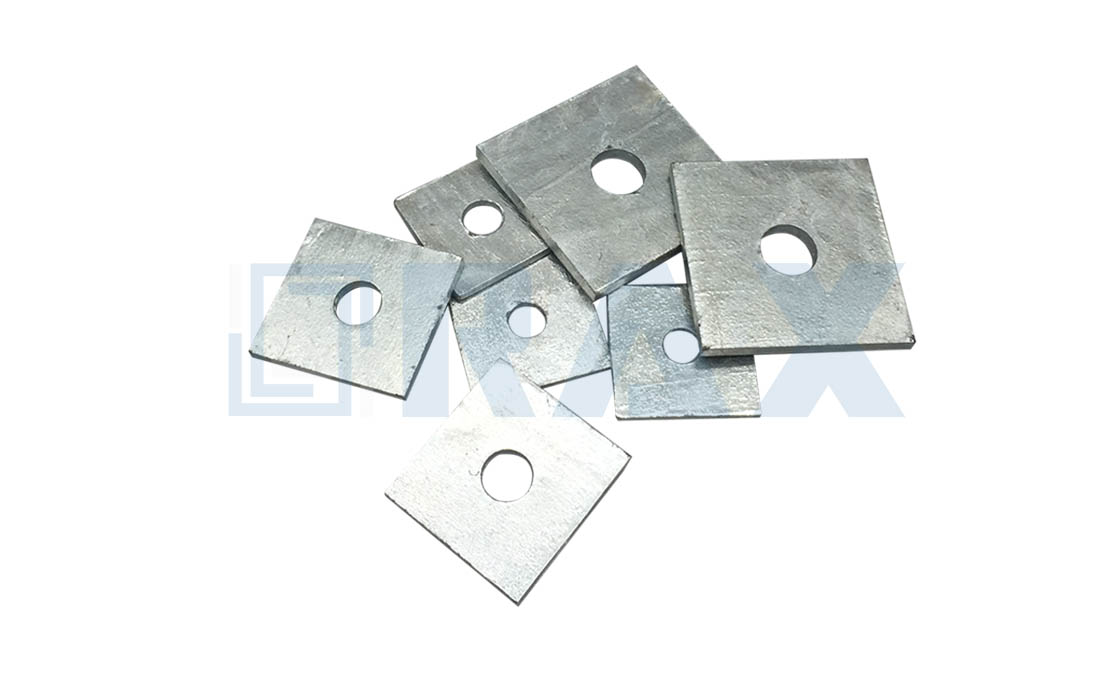 Washers
Washers
Please remember to have protective gear on to protect you in case of any accidents.
Step-by-step Washer Installation Process
The process of installing washers is also straightforward and does not require the supervision of an expert.
In most cases, the washers are available on the bolts and nuts, therefore, making it easy to install.
Apart from that, the manufacturer will provide more information on the mode of installation depending on the type of washer.
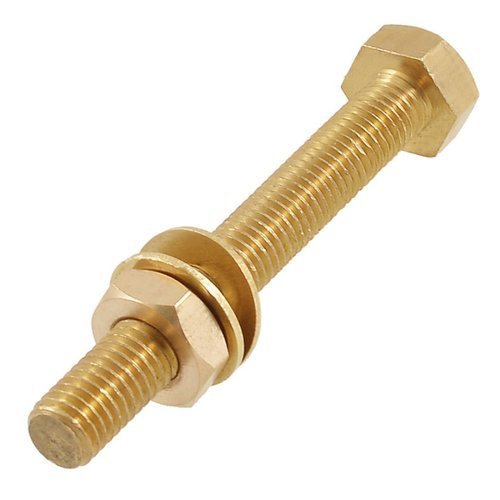
Nut bolt and washer
The first step is making sure that the bolt is in place.
In this case, drill a hole where the bolt will be fitting making sure that the diameters match.
Fit in the bolt into the hole making sure that it protrudes from the other end.
Installing washers can be before the bolt is in the hole or it can be after the bolt is in the hole.
The installation of the washer varies depending on the type of job you are doing.
After the washer is in place, follow it with a nut and fasten it well.
During the whole process of installation, remember to put on protective gear to protect your hands.
Frequently Asked Questions (FAQs)
What are the uses of a washer?
A washer is used to spread the load over a larger surface area and prevent damage to the surface beneath it. If a nut is used it also allows the nut to turn more easily.
What are the types of steel washers?
Washers include square washers, curved washers, and spring washers.
What are the sizes of square washers in the factory?
There are 3×3 square washers, 1” square washers, 1/4” square washers, 2inch square washers.
What is the square washers galvanized?
The square washers are hot-dip galvanized.
How to choosing the manufacturer of steel washers?
Here are the guidelines that can help you choose a suitable manufacturer:
- Check whether the company is licensed
- The production capacity of the company
- Look for the reviews about the manufacturer
- Experience of the manufacturer
Conclusion
Using washers has proven to improve the durability of fasteners, especially for bolts and nuts.
You have to be careful when making a choice on the type of washer you will require for particular uses.
Apart from that, you are now better off with the information on the washers, and you can make your order.
Talk to us today in case you need washers.
